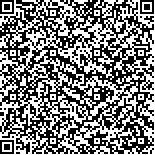下载中心
优秀审稿专家
优秀论文
相关链接
摘要

叶面积指数是陆地生态系统的一个十分重要的结构参数。用遥感数据求取叶面积指数可以利用光谱的信息,比如通过植被指数来拟合一个经验关系,但很多植被指数明显受土壤背景的影响,对于有明显行结构的农作物,土壤的影响很难消除,植被指数的方法误差较大。多角度遥感包含了大量的地面目标的立体结构信息,具备求解植被特征参数的潜力,但通常多角度遥感反演对光谱信息的利用不足。与以往的反演方法相区别,该文利用行播作物二向反射模型,将多角度与多光谱数据结合进行行播作物LAI反演实验,并对反演算法进行了详细的敏感性分析实验,结果表明采用多角度、多光谱遥感数据相结合的方法可以有效反演行播作物的叶面积指数。
Leaf area index (LAI) is an important parameter for describing vegetation canopy structure in the terrestrial ecosystem. LAI can be obtained using spectral information such as simulated relation of VI( vegetation index) , however, many VIs are affected by soil. For row crop, it is difficult to remove the effect of soil, and the error is large using the method of VI. Multiangular remote sensing is capable of providing more three-dimensional information of vegetation, and it is powerful in obtaining the parameter of the plants. However, currently, the retrieval of multiangular remote sensing seldom considers the use of spectral information. We use MSAVI2 as an index to get the a priori knowledge of LAI. As a result, the a priori knowledge is more objective. From the comparison of using or not using this MSAVI predicted a priori knowledge, we found that this approach is effective.

